John Maher: Hi, I’m John Maher. I’m here today with Joe Shairs, Ink manager and compliance officer at Inkcups, a leading supplier and manufacturer of industrial Inkjet printing equipment, pad printing equipment, inks, and accessories. So today we’re talking about the do’s and don’ts of pad printing on silicone. Welcome, Joe.
Joe Shairs: Thank you John. Thanks for having me again.
Challenges of Pad Printing on Silicone
John: Sure. So Joe, what is the ultimate challenge of printing with silicone ink?
Joe: The challenge here is we’ve got a lot of pad printers, and a lot of screen printers working with solvent-based inks. Silicone ink is a completely different animal. It does not air dry. It’s a heat cure system only. It’s designed to do one thing and one thing only, stick to silicone. There’s a whole host of other little tidbits that we can get into that will help any pad printer decorate promotional products that are made of silicone.
John: Okay, so to start off with, how do I know that my product is actually silicone? Because there are some other materials that are maybe flexible, plastics like that, that I might think of silicone, and they’re not.
Joe: Right. So there are a few different tests, internal tests that we do here. And you’re right, there are a few materials out there that kind of feel like silicone. There are a lot of TPU and TPE, or what they call thermo-plastic elastomers that kind of feel like silicone.So the intrinsic differences between the two, silicone itself will not deform under 600 degrees Fahrenheit when given that temperature. And it’ll actually hold heat. Another characteristic or silicone is it tends not to burn. So we can do some tests in our lab. If we get a couple of pieces from a client that says, “Let’s try your silicone ink on this product.” We can do what was known as a burn test. We can actually take, put it to a small flame and see if the product burns or stays lit. Silicone will self extinguish. And it’ll also leave a white ash.
John: You take it away from the flame and it goes out? It doesn’t stay on fire?
Joe: Correct. Another thing silicone does not do is it does not melt, unless the temperatures are above 600 degrees.
John: That’s why you see it a lot in cooking utensils and things like that?
Joe: Correct. It conducts heat very, very well. The TPUs of the thermal-plastic elastomers will break down and melt almost instantly. Therefore, you know that our silicone ink is not a good solution for you, and we need to talk about something different.
To see this testing in action, watch: Silicone Printing: How to Test if your Product is actually Silicone
Silicone Ink for Pad Printing on Silicone
John: So talking about silicone ink itself, why is silicone ink the only ink that adheres to silicone material?
Joe: That’s a great question. So silicone, the inherent characteristics of silicone is it wants to repel anything that it comes in contact with. It releases anything. The only thing that sticks to silicone is silicone. So if you take a wet silicone, dry it, and then take another wet silicone and dry it right on top, those two basically fuse together and become one piece. So again, what we’re really dealing with is, we’re not really dealing with silicone ink per say. We’re actually just dealing with liquid silicone, that once it’s heat cured becomes a permanent part of your product. Quite honestly, we have a few customers that will sometimes make a mistake in printing. And their next question to me is “How do I get it off?” Well ultimately you cannot. It is literally fused onto itself. That’s not the case with solvent-based ink. It’s basically-
John: You’d be able to use a solvent and wipe it off and then start over again.
Joe: Correct. With most of them you could. Yes. So again, silicone sticks to silicone, and that’s the only thing that will stick to silicone.
John: That’s interesting, because just I thought that by the name silicone ink, that’s just ink that sticks to silicone. It’s actually made of silicone.
Joe: Correct. Absolutely. Yep. All the characteristics and all the chemistry that makes up that ink is basically silicone.
Additional reading: The Idiosyncrasies of Printing Silicone Products
Process of Pad Printing on Silicone
John: So what is involved in the process of printing with silicone ink?
Joe: Okay. So there are a few tidbits that we can talk about here. So one of the things that we kind of touched upon earlier is we’re not dealing with a solvent-based ink system. So a lot of our pad printers and screen printers are used to dealing with ink systems that air dry. And some of the things that you’ve got to be weary about with silicone is it does not air dry. It remains wet until you introduce heat. So it’s a heat cured system. So one of the things that’s really difficult with silicone printing is doing multiple colors. Almost nobody’s doing multiple colors with silicone because the problem is you’re printing one color, you have to heat cure it, and you have to bring it back and print another color right on top of it. That’s the first thing you should consider.The second thing you should consider is, when you’re using silicone ink on a printing plate, and there’s residual ink left on the printing plate itself, in a typical solvent-based system, that ink is going to air dry and not be picked up by the printing pad. The silicone ink, that residual ink, could potentially be picked up by the silicone pad and deposited onto your part. Though some of the things we’d like to tell our customers is “If you’re going to pick a pad to do your job, pick a pad as close to the size of the image as possible, so you’re not grabbing any of that insulary ink that may be left over around the edge of the cup.” That’s very important. And then the second thing as we always tell our customers, is it’s a heat cured system.I can’t tell you how many times I’ve gotten calls from our customers telling me that the ink will not dry. The tech data sheet that we develop clearly states that 200-225 degrees Fahrenheit, the ink needs to go through that particular process for a good four to six minutes for it to cure. Because these guys are used to having their products just air dry right within minutes. That’s not the case with silicone ink. It always has to be heat cured.
John: And at a specific temperature, what’s the temperature range of which cures?
Joe: So the temperature range is, it all depends on how much ink you’re laying down. But the temperature range is about 200-225 degrees Fahrenheit or higher, for a good four to six minutes. Again, depending on the size of the graphic and the amount of ink you’re putting down. One of the things that we’ve been finding out lately also is the thinness or the thickness of the product you’re decorating also should be taken into consideration for the amount of time you need to heat it. A thinner piece of silicone will hold heat and get hot much quicker than a thicker piece of silicone. So thicker silicone and thicker silicone products may have to be left in an oven for a little bit longer time.
John: Okay, okay. And how do you determine that? Is it just a matter of testing?
Joe: It is. It really. That’s why we give it a range. Quite honestly, the customer should be doing their due diligence, and they may be able to get away with four minutes or even less depending on the temperature that their dryers are willing to get at. Some other customers only have the capabilities of a lower temperature, got to remain in that oven or that dryer longer, unfortunately.
John: Right. So you said before that silicone is the only thing that sticks to silicone. So I assume that means that silicone ink is the only option for printing on silicone, or are there other options?
Joe: Correct. In terms of what I know in the industry, silicone ink is the only thing that sticks to silicone. I have seen some videos in China where people are pretending to do some digital printing with silicone products. I’m not so sure if that’s primer related, or something that they’ve done to the ink specifically. But anything that I know in the United States, and quite honestly almost all of our customers, it’s silicone ink designed to stick to silicone for sure.
Pad Selection for Silicone Inks
John: Right. Talk a little bit about pad selection for silicone inks. Again, we’re doing pad printing here on silicones. So are there certain types or shapes or styles of pads that can be used for silicone ink and only those types?
Joe: That’s a great question. So we touched on a little bit here. So the shape of the pad is always dictated by the part, first and foremost. So one of the things we need to think about here is we’ve got a silicone pad, we’ve got silicone ink. The two want to be attracted to each other, but we want to get that ink off of the silicone pad and onto your silicone part. So one of the things, like I said earlier, the one of the things we try to tell our customers is “Try to pick a pad that’s closely the same size as your graphic.” That will help-
John: You don’t get that residual ink around the outside.
Joe: Correct. The second thing that you need to be aware of is eventually, every 10 or 15 prints, you’re going to need to wipe that silicone pad off, because you’re going to have silicone ink building up on that pad that did not get transferred to the silicone part. Because again, they want to stick to each other. That’s something not a lot of printers have a tough time getting used to because it’s solvent-based ink. The ink is released completely off the pad. That’s not necessarily the case of silicone ink, because some of it wants to stick to the pad, some of it wants to stick to your part. So you’re always going to have that residual ink left on the pad that eventually will have to be wiped off.
John: And is that because the pad is also made of silicone?
Joe: Correct. They are. All printing pads are made of silicone. One thing we should mention here is silicone ink is a platinum-based silicone. So there’s two types of silicones, platinum-based and tin-based. Platinum base is a silicone that must be heat cured. Tin-based silicone is a silicone that can air dry. All the inks that I know in the industry right now are platinum-based silicones that have to be heat cured for sure. Some of your pads can be tin-based, some of your pads can be platinum-based. Most of them that we do here are platinum-based silicone pads. So they’re basically the same material. So they want to attach to each other.
John: Talk a little bit more about multiple colors. You mentioned before that that can be an issue because obviously if it doesn’t air dry, then you can’t just print one wet color on top of another wet color, or they’re just going to mix together and make a mess. So you’re printing one thing, you have to heat cure that, then bring it back, print a second color on top of it. How many different times can you do that? Are there issues with multiple colors?
Joe: So there are issues with multiple colors, most of our customers right now are doing one color silicone pad printing. The product that kicked off this particular ink in the industry years ago was the silicone wallets on the back of your cell phone. I think everybody knows what those looked like now. Those are mostly screen printed or pad printed at one color. Now, if you’re going to do a multicolored pad print job with silicone, one of the things you need to take into consideration is registration. So if you’ve got a two color job or a three color job that is tightly registered to each other, you’re going to have a very difficult time printing one color, curing it, and then coming back and trying to register that second color where it needs to be.
John: And by register you mean lining it up so that it’s right on top?
Joe: Correct. Some of the graphics that I’ve seen work successfully is when you don’t have such a tight registration, and there’s a gap between the two colors, where the second color placement isn’t all that important, that’s when it’s much easier. I have not seen a lot of our customers do anything past two colors, quite honestly. Two color artworks that I’ve seen, are very, very loose registration. Typically, the colors aren’t touching each other.
John: It could be off by a few millimeters and it wouldn’t really matter to the image?
Joe: Correct. Nobody would ever catch it.
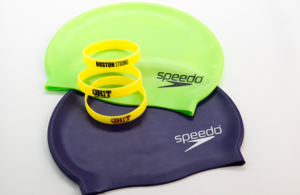
Solvent-based Ink and Silicone
John: Talk a little bit about the difference between solvent-based ink and silicone, and how that affects the printing process. Plate doctoring is another thing we talked about.
Joe: Sure. So solvent-based inks, they’re made of solvent, which evaporates fairly quickly. The cup goes back and forth. If there’s any auxiliary ink on the outside, typically by the time the pad comes down to pick up that image, that auxiliary ink on the edges is pretty much dry at that time, and it doesn’t get picked up by the pad. It’s very easy to work with that way. Silicone inks, some of the plate material that do not work with silicone ink is a photopolymer plate. Those are plate materials that have to be basically exposed. Some of the ones that we’ve seen work best are some of the laser plate material, where we’re actually etching the graphic on a plate. Those doctor really, really cleanly, so there’s not a lot of auxiliary ink left on the sides. So that’s one of the tips that I can give some of our listeners. Is that if you’re selecting a plate material, it’s best to select a plate material that’s probably been laser etched instead of photopolymer etched. Photopolymer does not doctor that cleanly. It’s not so much of an issue when you’re using solvent-based ink. It’s a huge consideration when you’re using silicone ink. Because there will be times where you will not get a “clean doctor,” and your pad’s going to want to pick up all of that extra ink. And of course, unfortunately, it’s going to deposit onto your part.
John: All right. Any sort of final thoughts in terms of do’s and don’ts in printing with silicone?
Joe: Keep in mind, again, you’re not dealing with a solvent-based ink system. It’s a heat cured ink system. One of the nice parts about that quite honestly is you’ve got a 24 hour plus part life. Solvent-based inks are typically one day or an eight hour shift.Pay attention to your pad selection in terms of size, and pay attention to your plate material. Try not to have it be photopolymer, try to have it be a laser plate material, and you should have great success.
John: That’s really great advice, Joe. Thanks again for speaking with me today.
Joe: Great. Thank you, John.
John: And for more information about Inkcups and Inkcups printing equipment, visit the website at Inkcups.com, or call (978) 646-8980.
Learn more about Inkcups’ line-up of silicone printing inks: SI-HD Series Pad Printing Silicone ink and SI Series Silicone ink
Listen on spotify: https://open.spotify.com/show/1pItaePkEP4TAUbsEoFTcd
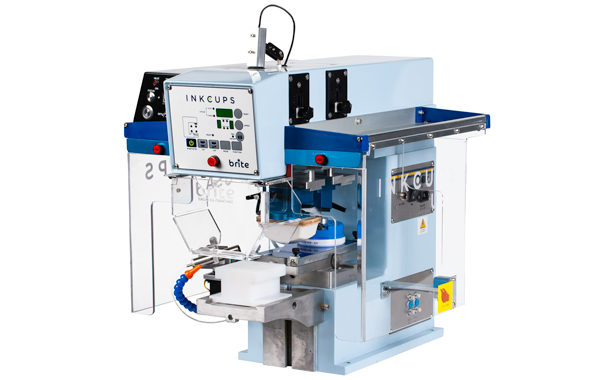 Tagless Printers
Tagless Printers Cylindrical Inkjet Printers
Cylindrical Inkjet Printers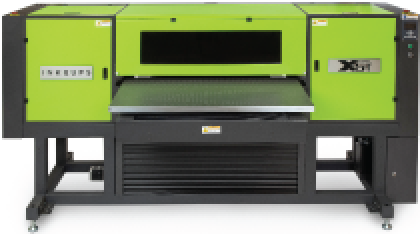 UV Flatbed Printers
UV Flatbed Printers Pad Printing Machines
Pad Printing Machines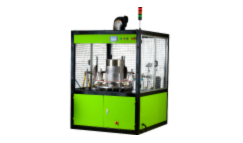 Pretreatment Systems
Pretreatment Systems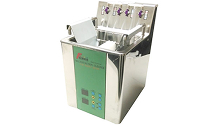 Inkjet Printing Auxiliary
Inkjet Printing Auxiliary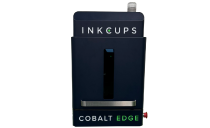 Laser Plate-Makers
Laser Plate-Makers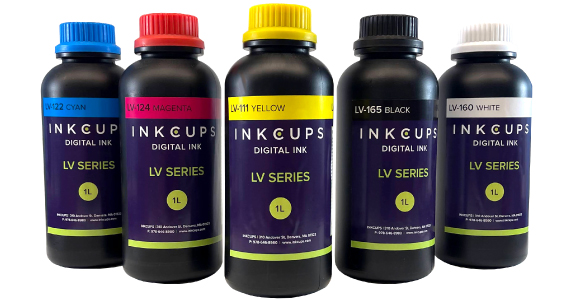 Inkjet Printing Supplies
Inkjet Printing Supplies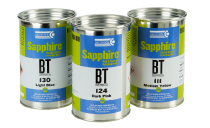 Pad Printing Supplies
Pad Printing Supplies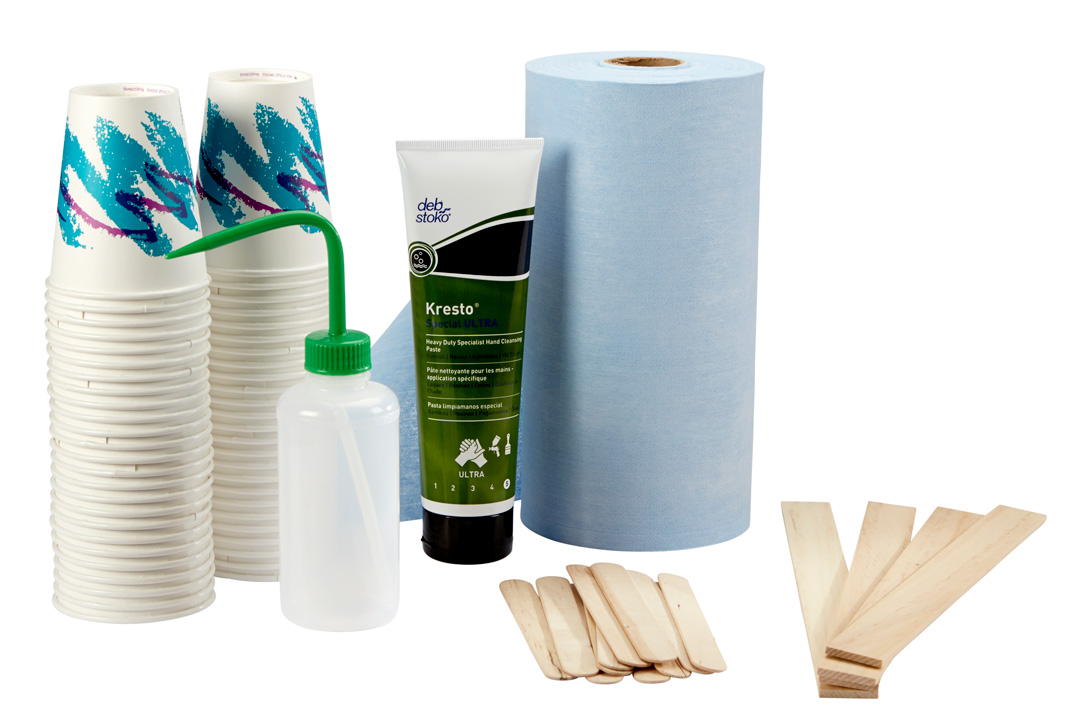 Tagless Supplies (tagless.inkcups.com)
Tagless Supplies (tagless.inkcups.com)
Add Your Comment